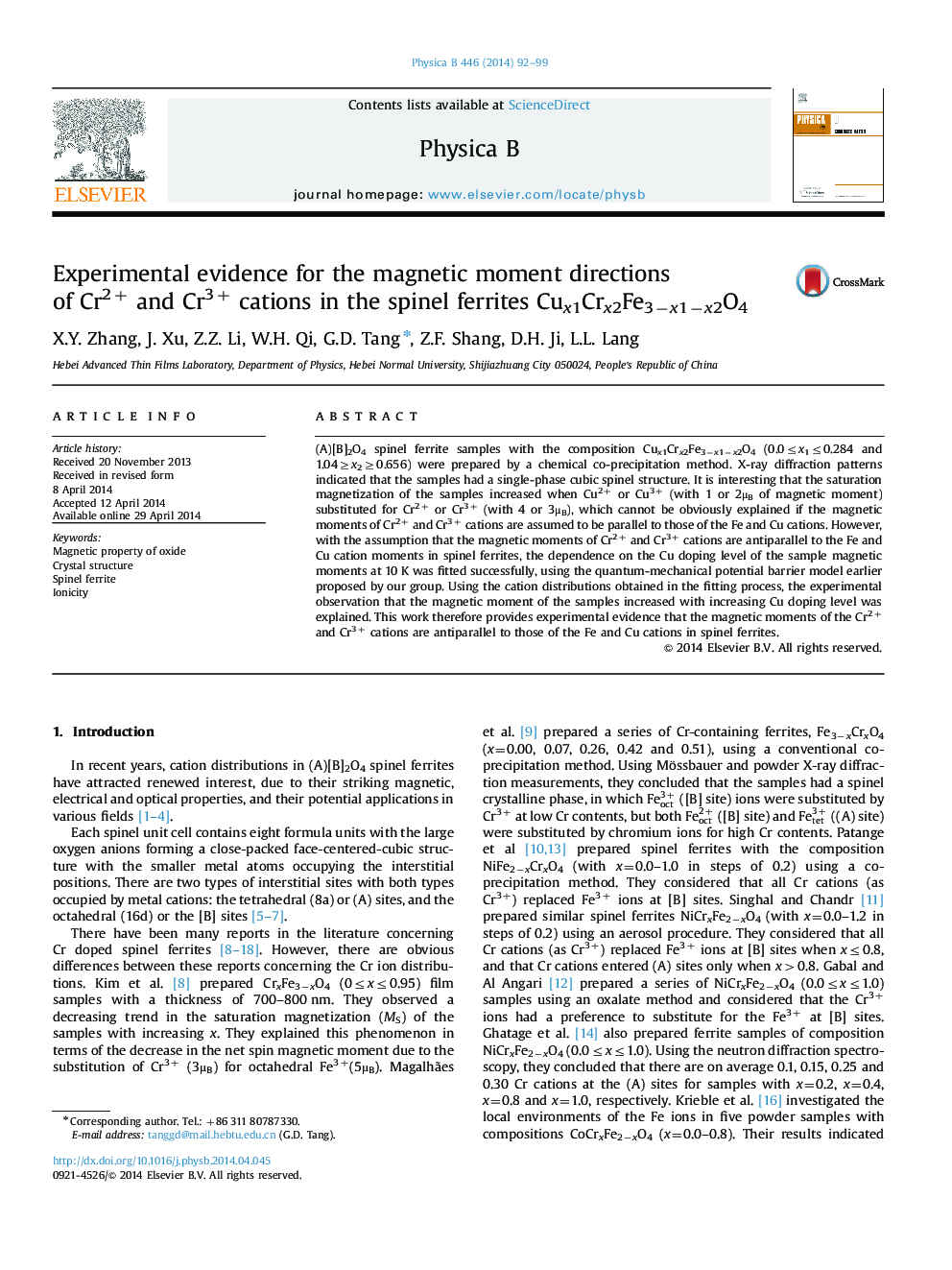| Article ID | Journal | Published Year | Pages | File Type |
|---|---|---|---|---|
| 1809472 | Physica B: Condensed Matter | 2014 | 8 Pages |
Abstract
(A)[B]2O4 spinel ferrite samples with the composition Cux1Crx2Fe3âx1âx2O4 (0.0â¤x1â¤0.284 and 1.04â¥x2â¥0.656) were prepared by a chemical co-precipitation method. X-ray diffraction patterns indicated that the samples had a single-phase cubic spinel structure. It is interesting that the saturation magnetization of the samples increased when Cu2+ or Cu3+ (with 1 or 2μB of magnetic moment) substituted for Cr2+ or Cr3+ (with 4 or 3μB), which cannot be obviously explained if the magnetic moments of Cr2+ and Cr3+ cations are assumed to be parallel to those of the Fe and Cu cations. However, with the assumption that the magnetic moments of Cr2+ and Cr3+ cations are antiparallel to the Fe and Cu cation moments in spinel ferrites, the dependence on the Cu doping level of the sample magnetic moments at 10 K was fitted successfully, using the quantum-mechanical potential barrier model earlier proposed by our group. Using the cation distributions obtained in the fitting process, the experimental observation that the magnetic moment of the samples increased with increasing Cu doping level was explained. This work therefore provides experimental evidence that the magnetic moments of the Cr2+ and Cr3+ cations are antiparallel to those of the Fe and Cu cations in spinel ferrites.
Related Topics
Physical Sciences and Engineering
Physics and Astronomy
Condensed Matter Physics
Authors
X.Y. Zhang, J. Xu, Z.Z. Li, W.H. Qi, G.D. Tang, Z.F. Shang, D.H. Ji, L.L. Lang,
